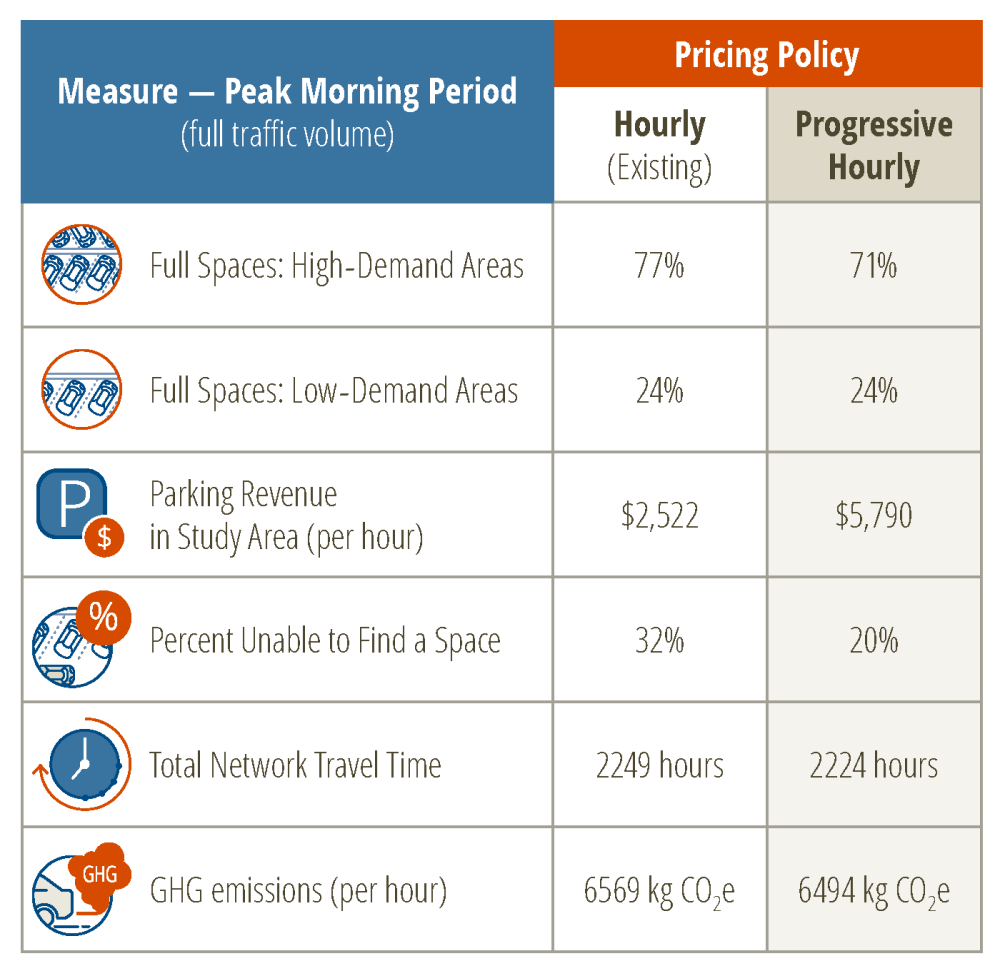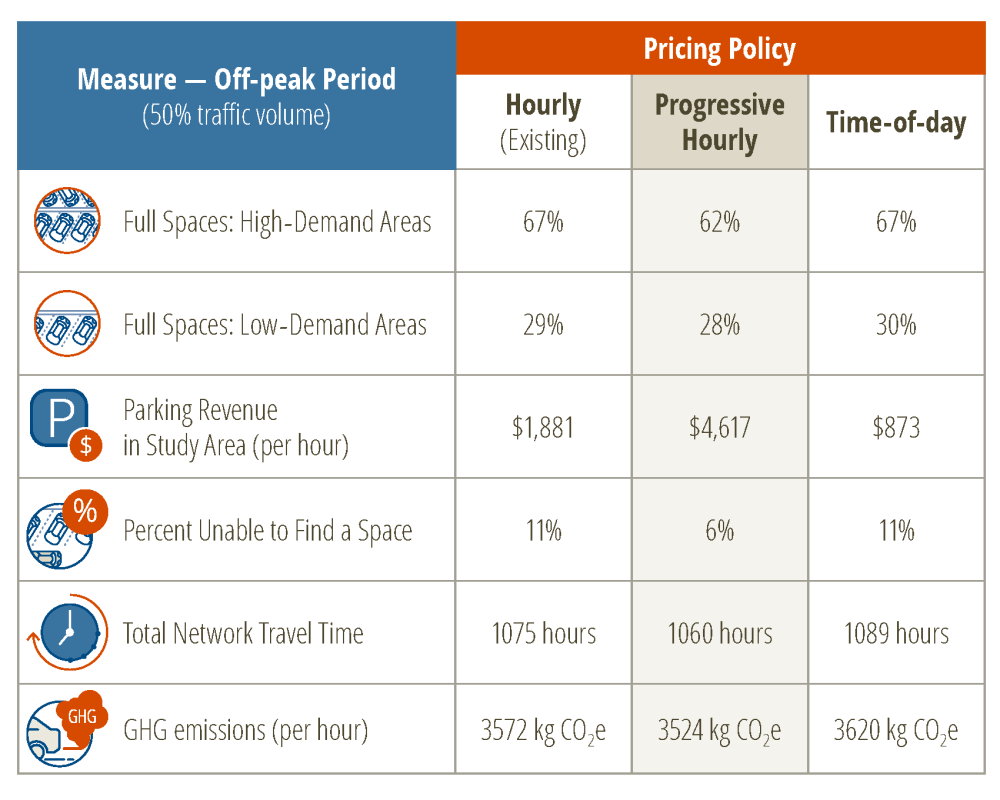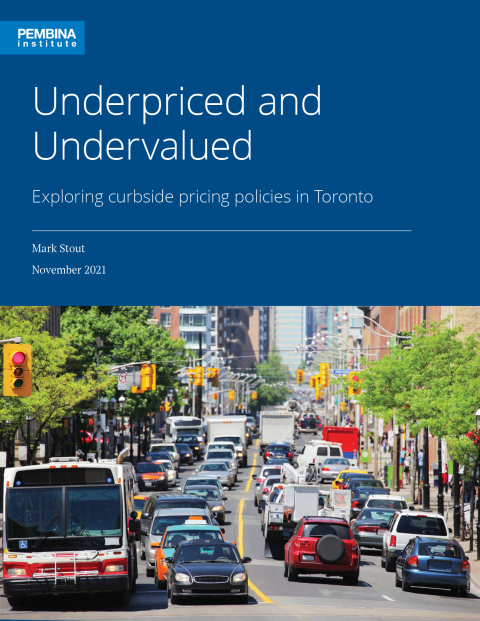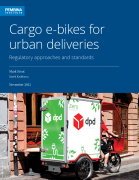Curbside competition is intensifying. In Toronto, as in all big cities, travel behaviours and transportation patterns are changing. As such, the City of Toronto has recently developed a Curbside Management Strategy to improve the allocation and usage of this space, and to ensure people can access the curb where and when they need it. This city policy includes a recommendation to explore variable curbside parking pricing options, which is the focus of this report.
The last decade has resulted in great shifts in transportation and curbside use: mobile app-supported ride-hail, ride-share, and microtransit; micro-mobility options, such as e-cargo bikes and e-bike-shares; continued advancements in an equitable and efficient redistribution of street space from single occupancy motor vehicles toward walking, cycling, and public transit in dedicated curb lanes; responses to the current pandemic with patios and public spaces occupying curbside locations; the strategic reduction of off-street parking requirements for new developments; and increased doorstep package deliveries. Additionally, Toronto is experiencing land-use intensification through the further introduction of multi-residential and mixed-use buildings, increasing demand for access to the curbside, day and night. Toronto needs better ways to manage this intensifying curbside competition; the city must improve how it manages its biggest public space — its streets.
The need for parking infrastructure increases and decreases throughout the day and across the geography of the city, depending on traffic and access requirements. To maintain balance in the parking system, sophisticated tools are needed to handle peak demands. This is essential as parking policy is a powerful influencer of city look and feel, and how people travel within cities; it is more significant than almost anything else. A more nuanced curbside parking policy can address peak-period parking congestion, more evenly distribute the demand on the streets, and meet overall parking policy objectives.
An econometric and traffic model was developed to examine three different on-street parking pricing policies to assess their effectiveness in addressing the curbside challenges facing Toronto today: hourly pricing, which is the existing policy in Toronto; progressive hourly pricing, where prices increase with the duration of the stay; and time-of-day pricing, where prices increase during peak demand. The study did not model dynamic pricing, where parking prices are matched to parking demand in real time. Each pricing policy was evaluated based on their effectiveness to manage curbside competition, alleviate congestion, and reduce transportation-related greenhouse gas emissions. Further, policies were evaluated in peak-period conditions (morning rush hour) and off-peak-period conditions.
The Pembina Institute finds that the existing policy — hourly pricing — is failing to effectively manage high-demand curbside parking on some streets in the downtown core, with some areas overutilized, showing 80-100% occupancy during peak hours.
Based on our research findings, the Pembina Institute recommends moving to the implementation of a progressive hourly pricing policy. Some of the benefits of progressive hourly parking pricing:
- Keeps curbside parking occupancies lower. In the peak period, progressive hourly pricing reduces the average occupancy rate by 7% compared with the existing policy. Lower occupancy makes parking easier to find.
- Reduces “cruising” for parking. Vehicles searching for parking often have to circle the block, wasting time and emitting greenhouse gases. In the peak period, progressive hourly pricing reduces the number of vehicles that cruise and search for available parking by almost 40%, compared to hourly pricing (existing condition).
- Lowers the total network travel time and carbon emissions of all vehicles in the network.
- Increases the collected parking revenue.
Based on our review of implementation practices of other jurisdictions, such as Albany, New York, Aspen, Colorado and Antwerp, Belgium, the City may want to consider implementing a pilot project in a targeted area prior to full program rollout to resolve any unintended outcomes. Best practices show that developing a comprehensive public education and communications campaign on changes to parking policies is key to successful implementation.
Although this study did not evaluate the potential impacts of dynamic pricing in Toronto, research and real-world applications show that this policy approach, like progressive hourly pricing, can also be an effective way to manage curbside activities. Where there is an opportunity to do so, the City may want to consider evaluating and comparing the effectiveness of a dynamic parking pricing policy in Toronto.







